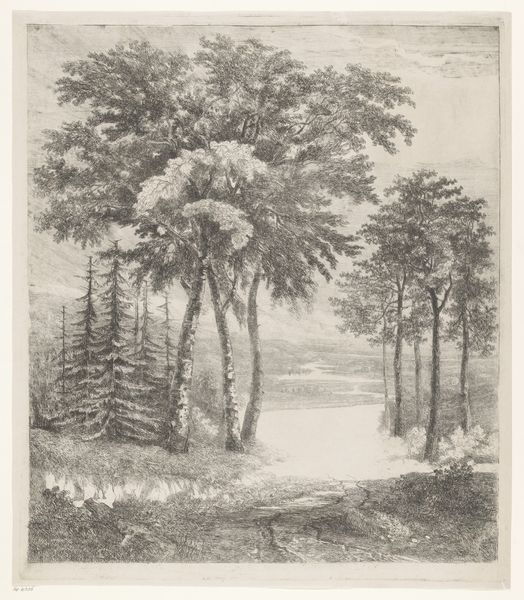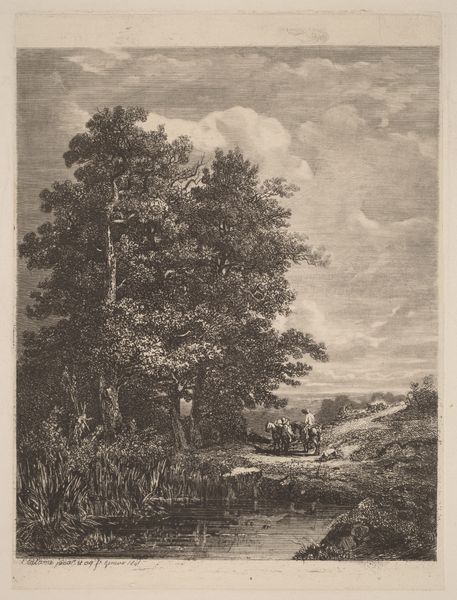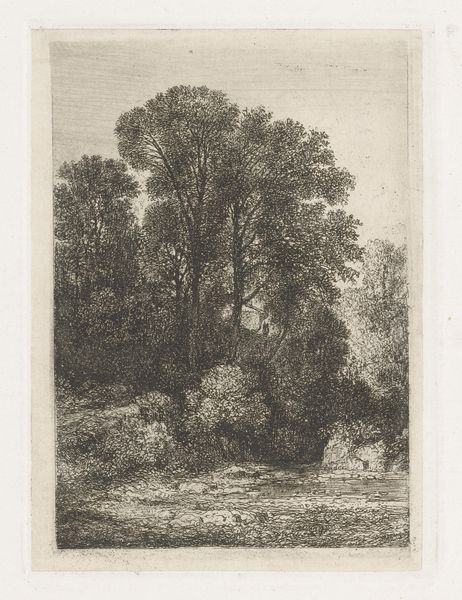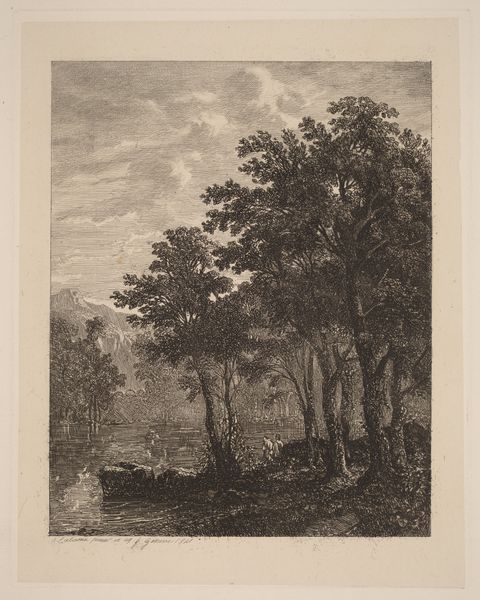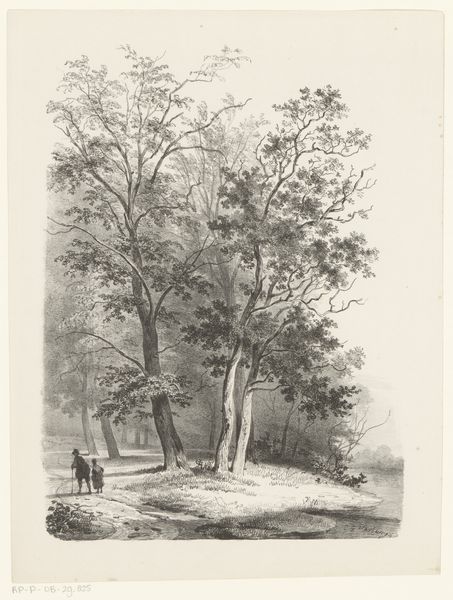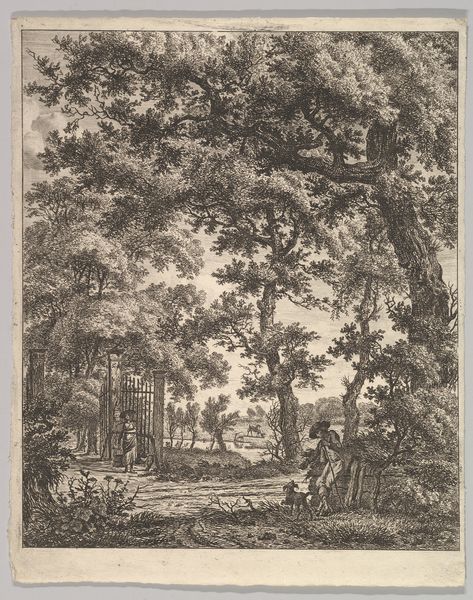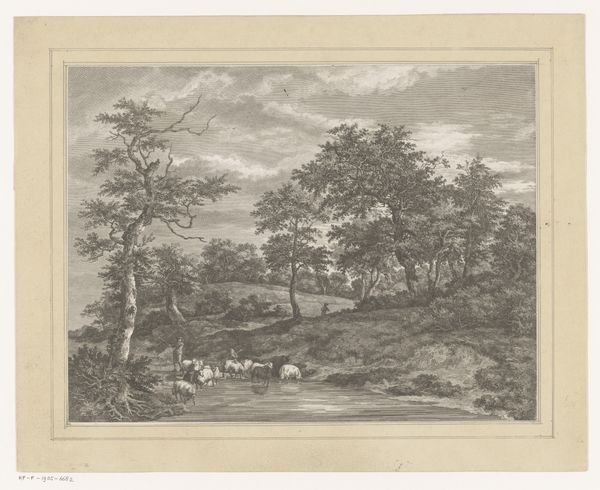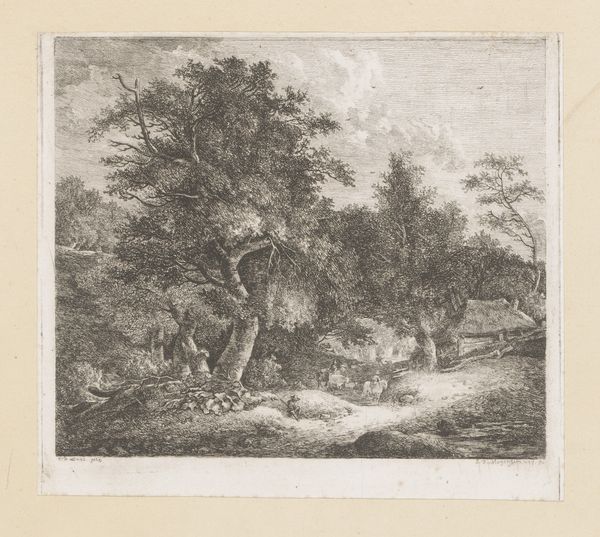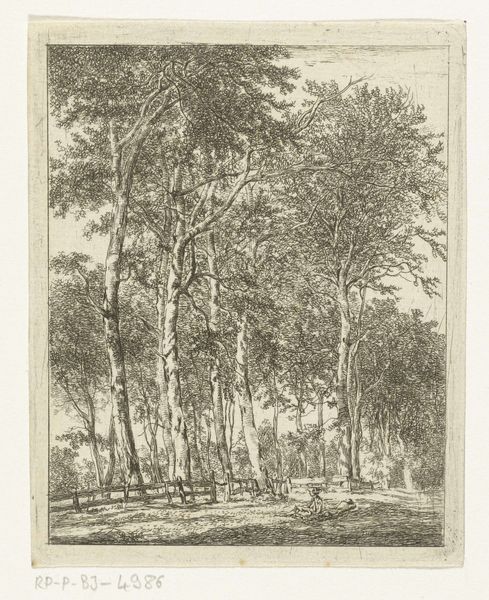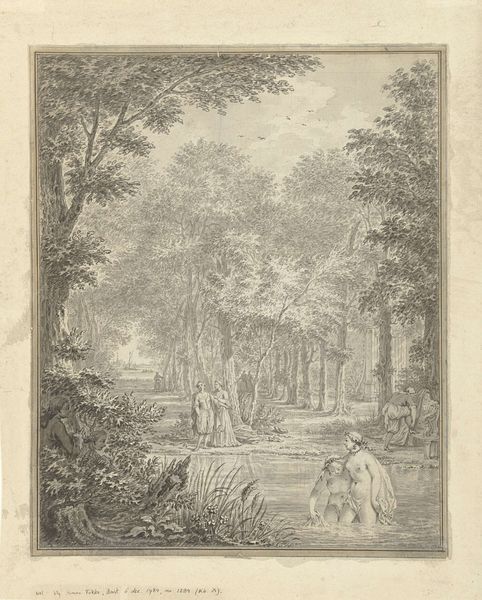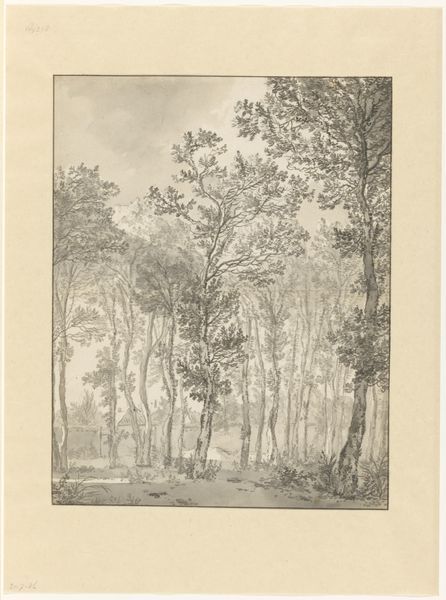
Dimensions: height 543 mm, width 460 mm
Copyright: Rijks Museum: Open Domain
Curator: Before us is "Landschap met paardenkar" by Jean Théodore Joseph Linnig, created before 1891. It’s rendered in pencil. Editor: Immediately, I'm struck by the almost ethereal quality of the light. It’s somber yet filled with movement. The whole scene feels like a transient moment, the sort one glimpses and then it's gone. Curator: The choice of pencil as the primary medium, particularly in this period, positions Linnig's work in a fascinating dialogue. The soft tones contribute to a nostalgic lens through which nature is experienced. Editor: Nostalgic, certainly, but also potentially complicit in a romanticized view of labour. Who drives the paardenkar? Where are they going? Curator: The drawing captures the increasing social changes within landscape art. It hints at agrarian shifts within the setting. Editor: The scale feels significant too, wouldn’t you say? Linnig doesn’t simply present a pretty picture. The focus on trees almost feels anthropomorphic. Curator: That’s a fantastic connection. Within the context of landscape paintings in the 19th century, works like this allowed nature to serve as a means to process feelings about nationalism, or a sense of cultural identity during times of immense political shift. Editor: Do you see this commentary reflected here, the political undertones, or a pure depiction of landscape? Curator: The relationship here could be examined as a symbol of our disconnection from a sustainable environment in modern society. But equally, others would claim that this is a drawing of nature in transition. Editor: So, the drawing allows for numerous, diverging interpretations. It feels relevant still in the way it visualises the past meeting the present. Curator: It shows how even what appears straightforward in terms of medium or image carries diverse potential implications, given the conditions of production and contemporary dialogues. Editor: An encounter with history always brings that to light.
Comments
No comments
Be the first to comment and join the conversation on the ultimate creative platform.
